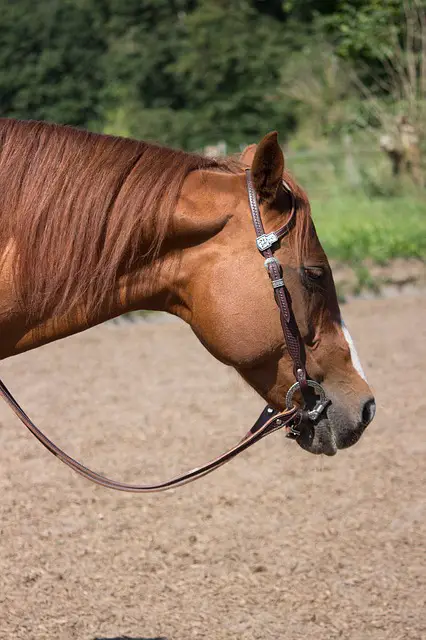Last Updated on April 4, 2022 by Allison Price
I get asked often the question, “How do you know what hackamore I should get?”. There are many answers that address different concerns.
First, make sure it fits properly. There are many measurements that can affect how a hackamore fits. The hackamore’s position on the horse’s nose will determine the length of the bars. The hackamore is placed just above the horse’s nostrils, just below the jaw muscle and just below the eyes. Horses have a slightly cone-shaped nose.
The first question to ask is “Where should the hackamore be placed on the horse? Why?” A slight bump will appear between the top of one’s nostril and the bottom. The bump is actually bone. The bump is where the cartilage begins to overlap bone. The further you get below the bump, the thinner and heavier the bone will become.
Different sensations and responses will be experienced by bone and cartilage. This can be understood by pressing your finger between your eyes and the top part of the nose. If you feel one sensation, push on the cartilage with the tip of the nose. The bone is more sensitive than the cartilage, but it can withstand more pressure. We can get better responses if we operate on feel. The noseband should be kept up above or below the bump or approximately halfway between the base of the eyelid and the topmost nostril.
The hackamore should be about halfway between the base of the eyeball and the top end of the nostril.

How tight or loose should the hackamore be?
It shouldn’t be too tight or too loose. This will cause a signal delay and make it difficult to receive. We might want to be like Goldilocks, and find one that fits in the middle.
If the heel knot rests on the chin, we should be able raise it at least halfway up the jaw. If it stops, the horse will be able to open his mouth and lick his lips. The horse can become upset if the heel knot is not raised far enough from their chin. The signal cannot be too slow or sloppy if the heel knot can be raised all the way to the jaw muscle.
We can just remember to keep the hackamore about halfway between the nose and jaw. When the hackamore is tightened with the mecate attached, it should be about halfway between the base of the eye socket and the top nostril.
We could also use a string to circle around our nose at these points. This will give us the measurement of how much space we need within a hackamore plus the area for the wraps of mecate. From this, we can determine the hackamore length we require.
The average riding horse will be between 22 and 23 inches in length. If we add up the wraps of mecate, rounding down smaller fractions, and then calculate the distance between the inside noseband and the inside heel knot for different hackamores in standard (allowing the mecate to be the same size as the hackamore multiplied by 3 or 4 wraps).
Ponies and Arabs may be smaller at 21.5 inches or less, warmbloods or draft crosses may be bigger at 24 inches or more. However, horses from a variety of breeds will all have the same size muzzle, regardless of how long their heads are. This quick measurement will help you determine.
How the hackamore hangs or functions can be affected by the length of the noseband. The closer the noseband is to the horse’s eyes, the better. Although it seems bad, this is actually a good thing. The hackamore hangs better the closer the noseband is to the horse’s eye. The hanger acts as a fulcrum. The further the fulcrum point is from the eye, the faster the heel knot will drop when we release the reins. This makes it easier to send a signal.
How the hackamore fits and works will depend on the shape of your noseband. A noseband can be the same width at the ends as in the middle. This allows the hackamore’s noseband to better fit the horse’s contour. This allows for more contact between the horse and rider, and gives them more feeling.
The ends of most nosebands will be raised. Nerve knots are sometimes called this. Although this may sound like a training trick, the foundation knot is what holds the hackamore in place when it is being constructed. This is essential as it will make the hackamore draw faster and won’t stay put.
A horse can be touched around its nose by you and it will not respond differently if you touch the “nerve knots” area.

